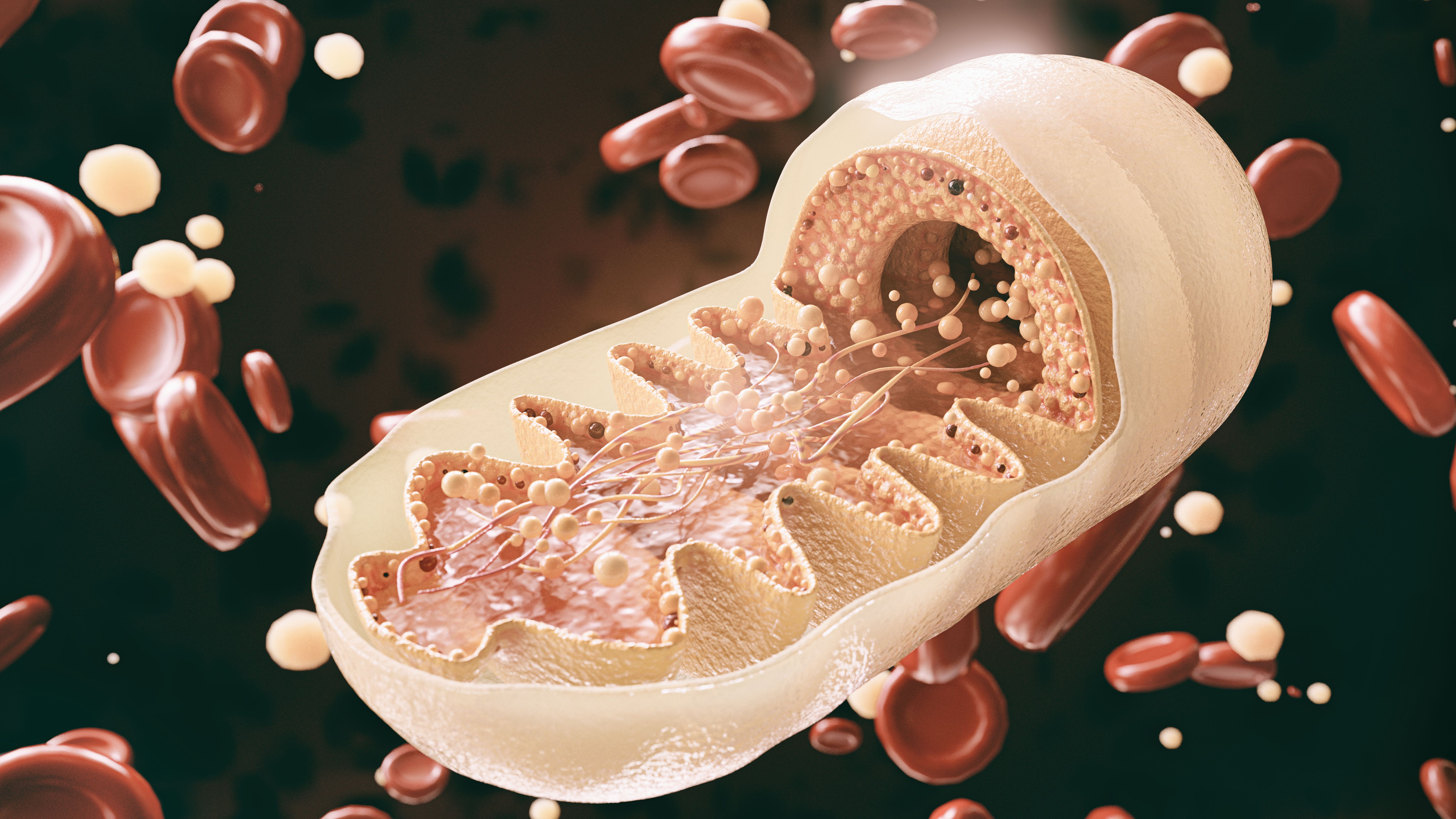Breakthrough Two-Photon Probe Enables Sensitive Detection of Sulfur Dioxide Derivatives in Living Cell Mitochondria
A scientific team has developed a two-photon phosphorescent probe, Ir-CN, for the sensitive detection of sulfur dioxide derivatives in living cell mitochondria.
A new two-photon phosphorescent probe, Ir-CN, can detect sulfur dioxide derivatives in living cell mitochondria, according to a new study published in Spectrochimica Acta Part A: Molecular and Biomolecular Spectroscopy (1).
mitochondria cell in close-up - 3D Rendering | Image Credit: © crevis - stock.adobe.com

Monitoring the presence of sulfur dioxide derivatives is important because it aids our understanding of biological processes. The research team sought to show in their study that their newly developed probe could aid future scientists in conducting further studies on mitochondrial functions.
SO2 derivatives, especially bisulfite (HSO3−) derivatives, play a crucial role in the biological environment, particularly in the circulatory system (1). However, moderation of SO2 derivatives is important. An excessive amount of SO2 derivatives can lead to severe damage within living systems (1). The two-photon phosphorescent probe based on an iridium (III) complex, Ir-CN, that the team developed was designed to address this problem (1).
The results were encouraging. The Ir-CN probe successfully demonstrated that it contained great selectivity and sensitivity towards SO2 derivatives, exhibiting significant phosphorescent enhancement and an increased phosphorescent lifetime upon detection (1). The probe exhibited a remarkable detection limit for SO2 derivatives, reaching 0.17 μM (1). Moreover, Ir-CN was found to accumulate preferentially in mitochondria, enabling the detection of bisulfite derivatives at the subcellular level (1). This targeted approach enhances the application of metal complex probes in biological detection, offering valuable insights into the presence and behavior of SO2 derivatives within mitochondria (1).
The single-photon and two-photon images illustrated the precise targeting of Ir-CN to mitochondria (1). As a result of its biocompatibility, Ir-CN could be used as a tool for detecting SO2 derivatives within the mitochondria of living cells (1). This breakthrough can contribute to advancing our understanding of the role of SO2 derivatives in biological processes and facilitate the development of strategies to monitor and regulate their levels effectively (1).
Although further research is required to explore the full potential and applications of Ir-CN, this study represents progress in detecting and analyzing SO2 derivatives. The researchers anticipate that their findings will inspire further advancements in the field of molecular probes and enable a deeper understanding of the biological implications of SO2 derivatives in mitochondrial function.
Reference
(1) Xin, H.; Huang, Y.; Han, Y.; Tang, L.; Yang, G.; Zhang, Y.; Zhao, S.; Wang, K.-N.; Li, Y.; Cao, D.A two-photon iridium(III) complex probe for sensitive detection of SO2 derivatives in living cell mitochondria. Spectrochimica Acta Part A: Mol. Biomol. Spectrosc. 2023, 299, 122876. DOI: 10.1016/j.saa.2023.122876
A Proposal for the Origin of the Near-Ubiquitous Fluorescence in Raman Spectra
February 14th 2025In this column, I describe what I believe may be the origin of this fluorescence emission and support my conjecture with some measurements of polycyclic aromatic hydrocarbons (PAHs). Understanding the origin of these interfering backgrounds may enable you to design experiments with less interference, avoid the laser illuminations that make things worse, or both.